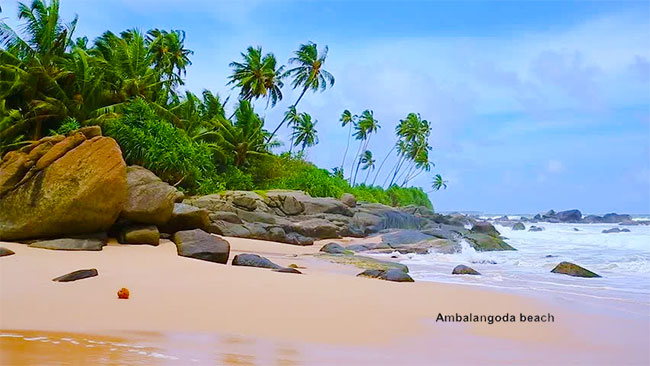Features
A bit more about Ambalangoda

Uditha Devapriya wrote ‘Almost all about Ambalangoda’ last week. Let me fill in a niche.
Kuda Adikaram, who had built some infrastructure in the Ambalangoda, had been baptised: so he must have lived after the Portuguese were in the coastal belt. In the 15th century, before the advent of the Portuguese, Ambalangoda does not seem to have been a significant settlement. I had read the flurry of sandesa kavi written in the 15th century. None of them, repeat none of them makes any mention of Ambalangoda. In Mayura, there is velapura, berug(v)ala, bentota, paratharakaya, velitota, totagamuva, valituduva and galle. Kokila mentions ratgama, hikkaduva, totagamuva, mahadampa modera (now the southern limit of Ambalangoda), kosgoda etc. Gira has panadura, potupitiya, …..paiyagala, valitota, mahadampa (there was probably a large madam tree) modera. Amblangoda did not receive mention in any of these or in other sandesa kavi. Then it was an insignificant settlement, if at all.
However, gira mentions an ambalama, only one and not many, after velitota(tara) and before mahadampa modera, probably, in the neighbourhood of present day Ambalangoda. The author takes 64 short verses to give an account of what took place in the ambalama, that evening. It must have been pretty spacious. Travellers rested for the night in the ambalama and they engaged themselves in conversation: rama sita kata pavasati. However, from Mr.Devapriya’s account it is evident that Ambalangoda had undergone a transformation during the 16th century.
The cause of that transformation is the search by the Portuguese for cinnamon. The hinterland of that coastal settlement is good cinnamon country to date: kurundu gaha hatakma, velipenne, elpitiya, pitigala, batapola, nindana, alutvala and telikada are all rich cinnamon lands. In the 1960s, when I Iived in Ambalangoda for a short period, Sherman de Silva and Sons, who collected and transported cinnamon to their main store in Maradana for shipment overseas, was the largest commercial establishment in Ambalangoda. They had their offices and stores on the corner of Main Street and First Cross Road. I don’t know the present state.
Ambalangoda now is a bustling town, metaphorically, bursting at its seams. Between Galle and Moratuwa, it has the best schools. Perhaps in consequence, many people live in the town and many others more come from outlying areas. There is a lot of school traffic. Any day, including weekends, the town is crowded with people. All the roads are very narrow, built for a time gone by. The old Main Street is specially so. The New Road which once relieved the pressure on Main Street is itself now crowded. Cross Streets are still narrower. Into these narrow and crowded streets are packed banks, jewellers, bakers, barbers, tailors, pharmacies, doctors’ offices, cloth and clothes merchants, temples, a vegetable market and a renowned fish market.
The town can no longer hold all this and must physically expand. There is room to the north, towards Randombe, to the south beyond the narrow bridge across over Madampa Oya and to the east beyond Polvatte. Towards the west is the sea, not altogether inviting. All this requires large investments in infra-structure well beyond the capacity of the town to raise. On such investments depends the fate of the cinnamon town which came up in the 16th century.
Ambalame Pina